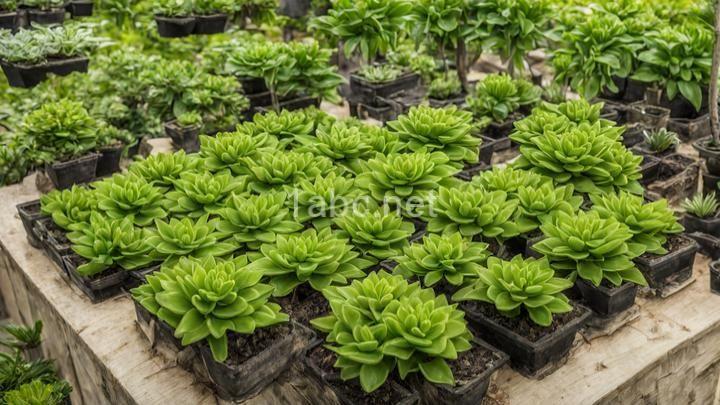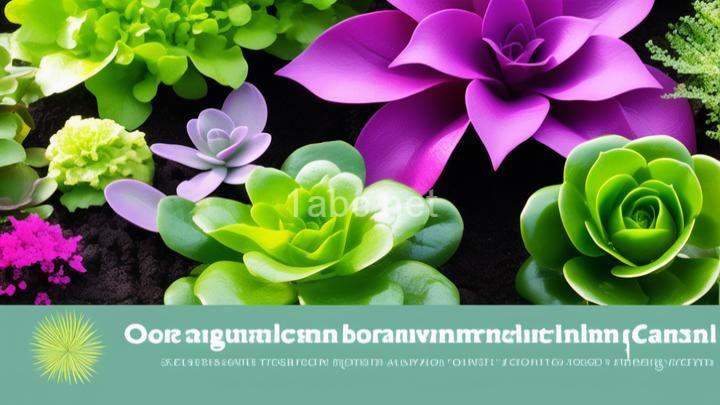Common Mistakes to Avoid in Pest and Disease Control for Ornamental Plants

Introduction:
Welcome to our friendly guide on pest and disease control for ornamental plants! In this blog, we will discuss some common mistakes to avoid when dealing with pests and diseases in your beautiful garden. By avoiding these pitfalls, you can ensure the health and vitality of your ornamental plants.
I. Lack of Proper Identification
One of the most crucial steps in effective pest and disease control is correctly identifying the issues affecting your plants. Mistaken identification can lead to ineffective treatments or even harm beneficial insects. To avoid this, take the time to research or consult with experts to accurately diagnose the problem. There are many resources available, including online guides, gardening forums, and local gardening centers. By correctly identifying the pests or diseases, you can choose the appropriate treatment and prevent further damage to your plants.
II. Overuse of Pesticides
While pesticides can be effective in controlling pests and diseases, their excessive use can have negative consequences. Overuse can harm beneficial insects, disrupt the ecosystem balance, and even lead to pesticide resistance. Instead of relying solely on pesticides, consider integrated pest management strategies. Integrated pest management focuses on prevention, monitoring, and targeted treatments. By combining various techniques such as cultural practices, biological controls, and least-toxic pesticides, you can effectively manage pest and disease issues while minimizing harm to the environment.
III. Ignoring Cultural Practices
Neglecting proper cultural practices such as watering, fertilizing, and pruning can weaken plants' natural defenses against pests and diseases. Healthy plants are more resistant to attacks, so it's crucial to provide them with optimal growing conditions. Make sure to water your plants appropriately, avoiding both underwatering and overwatering. Fertilize them regularly with the right nutrients to promote strong growth. Prune your plants to improve air circulation and remove any dead or diseased parts. By implementing these cultural practices, you'll create an environment that is less prone to pest and disease problems.
IV. Lack of Regular Monitoring
Prevention is key when it comes to pest and disease control. Regularly monitor your ornamental plants for any signs of trouble, such as wilting leaves, discoloration, or unusual growth patterns. By catching problems early, you can intervene quickly and minimize potential damage. Inspect both the leaves and stems of your plants, as well as the soil around them. Look for any pests, eggs, or larvae, and check for signs of diseases like spots or mold. Monitoring your plants regularly allows you to take immediate action and prevent the issues from spreading.
V. Failure to Rotate Treatments
Repeatedly using the same type of treatment can lead to resistance in pests or diseases over time. It's important to rotate different methods or products to prevent this from happening. When using pesticides, make sure to alternate between different active ingredients or modes of action. Consult product labels or seek advice from professionals regarding appropriate rotation strategies. By rotating treatments, you can effectively manage pest and disease populations and avoid the development of resistance.
VI. Improper Timing of Treatments
Timing is crucial when it comes to pest and disease control. Applying treatments at the wrong time can be ineffective or even harmful. Research the life cycle of pests and diseases affecting your ornamental plants. Learn about their vulnerable stages and apply treatments accordingly. For example, some pests may be more susceptible to control during their larval stage, while others may be easier to target during their adult stage. By timing your interventions correctly, you can maximize the effectiveness of your treatments and minimize damage to your plants.
Conclusion:
By avoiding these common mistakes in pest and disease control, you can maintain a healthy and thriving garden of ornamental plants. Remember to properly identify issues, use pesticides sparingly while implementing integrated pest management strategies, focus on proper cultural practices, monitor your plants regularly, rotate treatments, and time interventions correctly. If you encounter any challenges along the way, don't hesitate to reach out for assistance from gardening experts or professionals in the field. Happy gardening!
FREQUENTLY ASKED QUESTIONS
What are some common mistakes people make when it comes to pest and disease control for ornamental plants?
When it comes to pest and disease control for ornamental plants, there are a few common mistakes that people often make. One of the most common mistakes is not properly identifying the pest or disease before taking action. It's important to accurately identify the specific issue so that you can choose the most effective treatment method.Another mistake is using chemical pesticides as a first resort. While they can be effective, they should be used as a last resort due to their potential negative impact on the environment and beneficial insects. It's best to start with organic and natural methods, such as introducing beneficial insects or using homemade remedies.
Overreacting to minor pest or disease issues is also a mistake. Sometimes, plants can naturally handle small infestations or infections on their own. It's important to monitor the situation and intervene only if necessary. This allows the plant's natural defenses to build up and avoids unnecessary harm.
Neglecting preventive measures is another common mistake. It's crucial to take proactive steps, such as regularly inspecting plants for signs of pests or diseases, providing proper care and nutrition to keep plants healthy, and practicing good sanitation in the garden. Prevention is always better than cure.
Lastly, relying solely on one method of control is a mistake. Integrated pest management (IPM) is a more effective approach that combines multiple techniques. This can include cultural practices, biological controls, and targeted pesticide use if necessary. By diversifying your pest and disease control methods, you increase the chances of successfully managing and preventing issues.
Overall, being proactive, properly identifying problems, using a variety of control methods, and considering the environmental impact are key to effective pest and disease control for ornamental plants.
How can I avoid overwatering my plants, which can lead to pest and disease problems?
To avoid overwatering your plants and prevent pest and disease problems, there are a few strategies you can follow. First, make sure to water your plants only when they actually need it. This can be determined by checking the moisture level of the soil. Stick your finger about an inch into the soil and if it feels dry, it's time to water. If it's still moist, hold off on watering for a few more days.Another tip is to water your plants deeply but infrequently. This means giving them a good soak when you do water, allowing the water to penetrate deep into the root zone. This encourages the roots to grow deeper and become more resilient. However, avoid watering too frequently as this can lead to waterlogged soil and create a breeding ground for pests and diseases.
In addition, it's important to provide proper drainage for your plants. Make sure your pots or containers have drainage holes to allow excess water to escape. If you're planting in the ground, ensure that the soil has good drainage properties. If the soil tends to hold water, consider adding organic matter or creating raised beds to improve drainage.
Lastly, pay attention to the weather conditions and adjust your watering accordingly. During periods of heavy rain, you may not need to water at all, while hot and dry conditions may require more frequent watering. By being mindful of the weather and adjusting your watering schedule accordingly, you can help prevent overwatering and the associated pest and disease problems.
Remember, it's better to slightly underwater than to overwater your plants. They are more likely to recover from a little drought stress than from the damage caused by excessive moisture. So, keep an eye on your plants, listen to their needs, and water them appropriately to keep them healthy and thriving.
Are there any natural remedies or homemade solutions that can effectively control pests and diseases in ornamental plants?
Yes, there are indeed natural remedies and homemade solutions that can effectively control pests and diseases in ornamental plants. These alternatives can be a great option for those who prefer to avoid using chemical pesticides or want to try more environmentally friendly methods. Here are a few natural remedies you can consider:
-
Neem Oil: Neem oil is derived from the neem tree and is known for its insecticidal properties. It can help control a wide range of pests, including aphids, mealybugs, and spider mites. Dilute neem oil according to the instructions on the package and spray it on the affected plants.
-
Soap Solution: A simple soap solution made by mixing liquid dish soap with water can be effective against soft-bodied pests like aphids and whiteflies. Spray the solution on the plants, focusing on the undersides of the leaves where pests tend to hide.
-
Garlic Spray: Garlic has natural insect-repellent properties. To make a garlic spray, crush a few garlic cloves and mix them with water. Let the mixture sit overnight, then strain it and spray it on the plants. This can help deter pests like beetles and caterpillars.
-
Companion Planting: Some plants have natural pest-repellent properties. By interplanting these companion plants with your ornamentals, you can help keep pests at bay. For example, marigolds are known to repel aphids, while basil can deter mosquitoes.
-
Organic Mulch: Applying organic mulch, such as straw or wood chips, around the base of your plants can help suppress weed growth and create a barrier against soil-borne diseases.
Remember, these natural remedies may not provide instant results like chemical pesticides do, but with consistent use, they can help maintain a healthy and pest-free garden. It's also important to regularly monitor your plants for any signs of pests or diseases and take action promptly to prevent further damage.
Is it necessary to use chemical pesticides to control pests and diseases in ornamental plants, or are there alternative methods?
It is not necessary to solely rely on chemical pesticides to control pests and diseases in ornamental plants. There are alternative methods available that can effectively manage these issues while minimizing the use of chemicals. These alternatives include:
-
Cultural practices: Implementing proper cultural practices can help prevent pest and disease infestations. This includes providing adequate sunlight, water, and nutrition to the plants, as well as practicing proper sanitation by removing dead or diseased plant material.
-
Biological control: Using beneficial insects or organisms that naturally prey on pests can help control their populations. Ladybugs, lacewings, and predatory mites are examples of beneficial insects that can be introduced to the garden to combat pests.
-
Mechanical methods: Handpicking larger pests such as caterpillars or snails can be an effective way to control their numbers. Additionally, using physical barriers like nets or traps can prevent pests from reaching the plants.
-
Organic pesticides: If chemical intervention is necessary, organic pesticides derived from natural sources can be used instead of synthetic chemicals. These products are less harmful to the environment and can effectively control pests and diseases.
By integrating these alternative methods into your pest and disease management strategies, you can maintain the health and beauty of your ornamental plants while minimizing the negative impact on the environment. It is important to assess the specific needs of your plants and choose the most suitable method accordingly.


